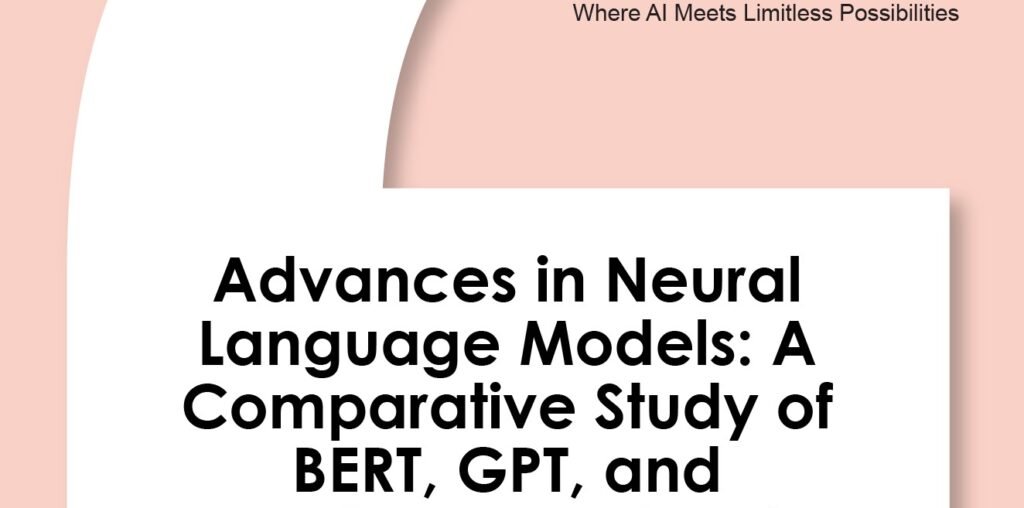The landscape of natural language processing (NLP) has been profoundly transformed by advances in neural language models. Among these, BERT (Bidirectional Encoder Representations from Transformers), GPT (Generative Pre-trained Transformer), and Transformer networks represent significant milestones in the development of language models. Each of these models has introduced innovations that push the boundaries of what is possible in understanding and generating human language. This article provides a comparative study of BERT, GPT, and Transformer networks, highlighting their unique contributions and impact on the field.
The Transformer Architecture: A Foundation for Innovation
Before delving into BERT and GPT, it’s crucial to understand the underlying architecture that has revolutionized NLP—Transformer networks. Introduced by Vaswani et al. in 2017, the Transformer model leverages self-attention mechanisms to process sequences of data, which allows for more efficient and parallelized training compared to previous architectures like RNNs (Recurrent Neural Networks) and LSTMs (Long Short-Term Memory networks).
Transformers consist of an encoder-decoder structure where the encoder processes the input text and the decoder generates the output. The key innovation of the Transformer is the self-attention mechanism, which enables the model to weigh the importance of different words in a sentence relative to each other. This mechanism allows Transformers to capture long-range dependencies and contextual relationships more effectively.
BERT: Bidirectional Understanding
BERT, introduced by Google in 2018, represents a significant leap forward in language understanding. Unlike traditional models that process text in a left-to-right or right-to-left manner, BERT employs bidirectional training. This means BERT considers the context from both directions simultaneously, providing a more nuanced understanding of each word in relation to the entire sentence.
Key Features of BERT:
– Bidirectional Contextualization: BERT’s bidirectional approach allows it to grasp the full context of a word by looking at both preceding and succeeding words.
– Pre-training and Fine-tuning: BERT is pre-trained on large text corpora using unsupervised tasks like masked language modeling (where words are randomly masked and predicted) and next sentence prediction. It is then fine-tuned on specific tasks, such as question answering or sentiment analysis.
– Performance: BERT has achieved state-of-the-art results on numerous NLP benchmarks, including the Stanford Question Answering Dataset (SQuAD) and the General Language Understanding Evaluation (GLUE) benchmark.
BERT’s architecture has inspired several variants, including RoBERTa (Robustly Optimized BERT Pre-training Approach) and ALBERT (A Lite BERT), which optimize and extend its capabilities further.
GPT: Generative Pre-training
GPT, developed by OpenAI, takes a different approach from BERT. GPT models are designed for generating coherent and contextually relevant text, making them particularly suited for tasks involving text generation and completion. The latest iteration, GPT-4, represents a significant advancement in the capabilities of generative models.
Key Features of GPT:
– Unidirectional Contextualization: GPT processes text in a left-to-right manner, generating text sequentially. This approach is well-suited for tasks like text completion and creative writing.
– Pre-training on Large Datasets: GPT models are pre-trained on vast amounts of text data using a language modeling objective, where the model learns to predict the next word in a sentence. This pre-training enables the model to generate coherent and contextually appropriate text.
– Fine-tuning for Specific Tasks: While GPT models are primarily designed for text generation, they can also be fine-tuned for various NLP tasks, including translation, summarization, and question answering.
– Performance: GPT-3, one of the previous versions, demonstrated impressive performance in generating human-like text and performing few-shot learning, where the model can generalize from a few examples.
Comparative Analysis
Architecture and Training:
– BERT focuses on bidirectional understanding, providing a more comprehensive grasp of context within sentences. It excels in tasks requiring deep contextual analysis, such as question answering and named entity recognition.
– GPT is optimized for text generation and completion, leveraging its unidirectional approach to produce coherent and contextually relevant text. It shines in creative and generative tasks but may struggle with tasks requiring deep contextual understanding.
Applications:
– BERT is typically used in applications requiring nuanced understanding of text, such as information retrieval, sentiment analysis, and classification tasks.
– GPT is suited for applications involving text generation, dialogue systems, and creative writing. Its ability to generate human-like text makes it valuable for conversational AI and content creation.
Performance and Scalability:
– Both BERT and GPT models have demonstrated state-of-the-art performance in various NLP benchmarks. BERT’s bidirectional approach provides a more profound understanding of text, while GPT’s generative capabilities allow for versatile text creation.
– The scalability of these models is a consideration, with larger versions like GPT-4 requiring significant computational resources but delivering enhanced performance.
Conclusion
BERT, GPT, and Transformer networks have each made substantial contributions to the field of natural language processing. BERT’s bidirectional understanding has set new standards in contextual analysis, while GPT’s generative capabilities have advanced text creation and completion. Together, these models represent the forefront of NLP innovation, each excelling in different aspects of language understanding and generation. As the field continues to evolve, ongoing advancements in neural language models will undoubtedly further enhance our ability to process and interact with human language.

